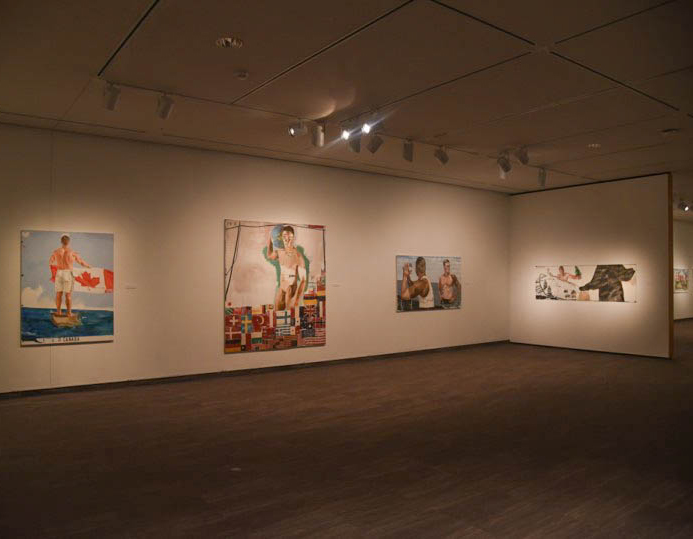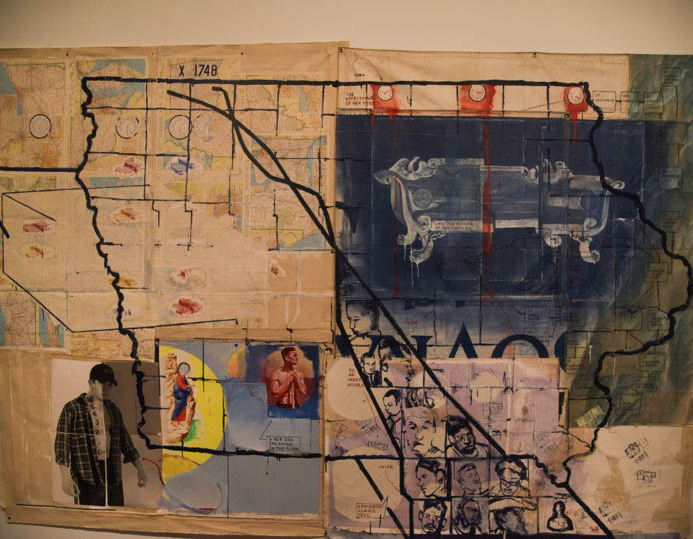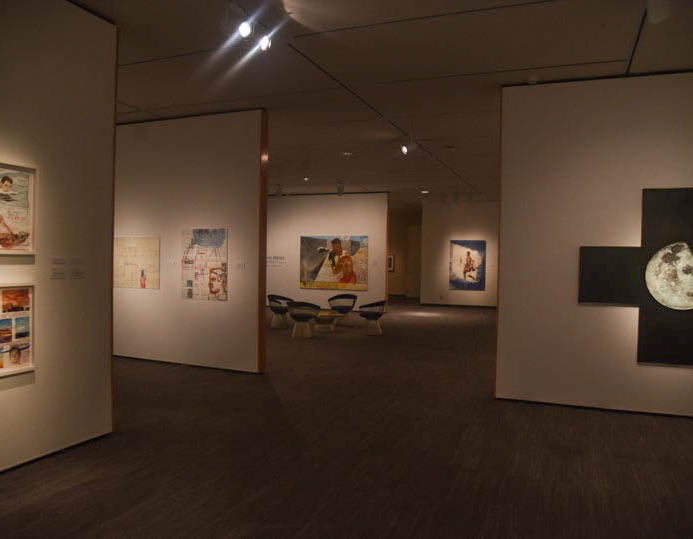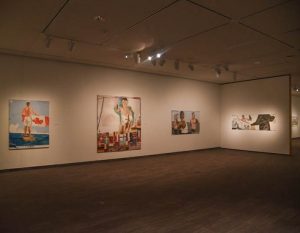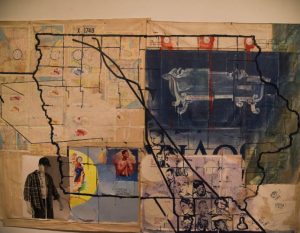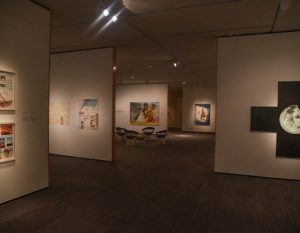Exploring ‘The Many Voices of Art’
Sep 5, 2019
When considering a painting, how it sounds isn’t usually what comes to mind. However, with their newest art gallery collection, Charles Adelman and Darrel Taylor want viewers to listen -— in a different sense of the word.
“The Many Voices of Art” exhibit is on display now in the Mary Haskell-Hansen Room of the UNI Gallery of Art until Oct. 5, from Oct. 16 to Nov. 16 and from Dec. 5 to Dec. 19.
The directors of the exhibit wished to display a wide variety of pieces. These include prints by Bronislaw Bak, “Seated Model with Mirror” by Steven Bigler and a sculpture titled “Flower” by Ralph Haskell. An 18th-century portrait is also featured, recently re-framed and donated by Hart Nelsen.
“We wanted to present works that have come into our collection in just the past couple of years and acknowledge the donors of those objects,” said Taylor, art gallery director. “They were the ones who originally cherished them, had them in their homes and decided to give them to us for our future care and exhibition.”
For their gallery’s overall theme, Taylor wanted to give each artist a chance to share their own voice and character within the artwork. Through the creations that each artist has made, he hopes that something is spoken to the viewer.
According to Taylor, many people who have viewed the exhibit have commented on the “Seated Model with Mirror” piece.
“It’s one of the largest works in this show, and that may be one of the reasons why people are drawn to it,” he said.
Taylor described the piece as a nude female figure in a stark setting: an empty table with light in the corner spilling into the room.
“It’s very dramatic in a way, and also very quiet,” he said. “Because of the sharp dark and sharp light, it does a lot of things at once. Because of the cool tones, it looks very calm. There’s the emptiness of the room, but it’s kind of shocked on the other side by the nude figure. It really gets your attention that way.”
Several challenges came up for Taylor while curating this gallery. Due to the broad topic of an artist’s voice, he had to find a way to make the pieces work with each other and speak in harmony. On one wall of the exhibit, Taylor did this by placing portrait pieces together. In another section, he placed still-life paintings of fruit, fish and similar subjects.
“Our hope is that people will enter the space, be drawn to things and contemplate them,” Taylor said. “I make it so you see things as you enter. I draw you in, then once you’re drawn in, you see things you may not have noticed. On the way to see another thing, a viewer may get stopped on their way by another thing.”
Taylor curated the exhibit in collaboration with Adelman.
“In examining art carefully, one realizes that even without vocal cords, art is capable of speaking and singing,” said Adelman in a press release. “One can hear through it the vox humana (human voice) — that of the artist, the culture, the issues, the frustrations and the emotions of the period in which it was made as well as our own responses to it. Sometimes the voices are harmonious, sometimes discordant, sometimes polyphonous, sometimes monophonic. The exhibition challenges the viewer to study the works to hear the voices and to listen to one’s own response.”


